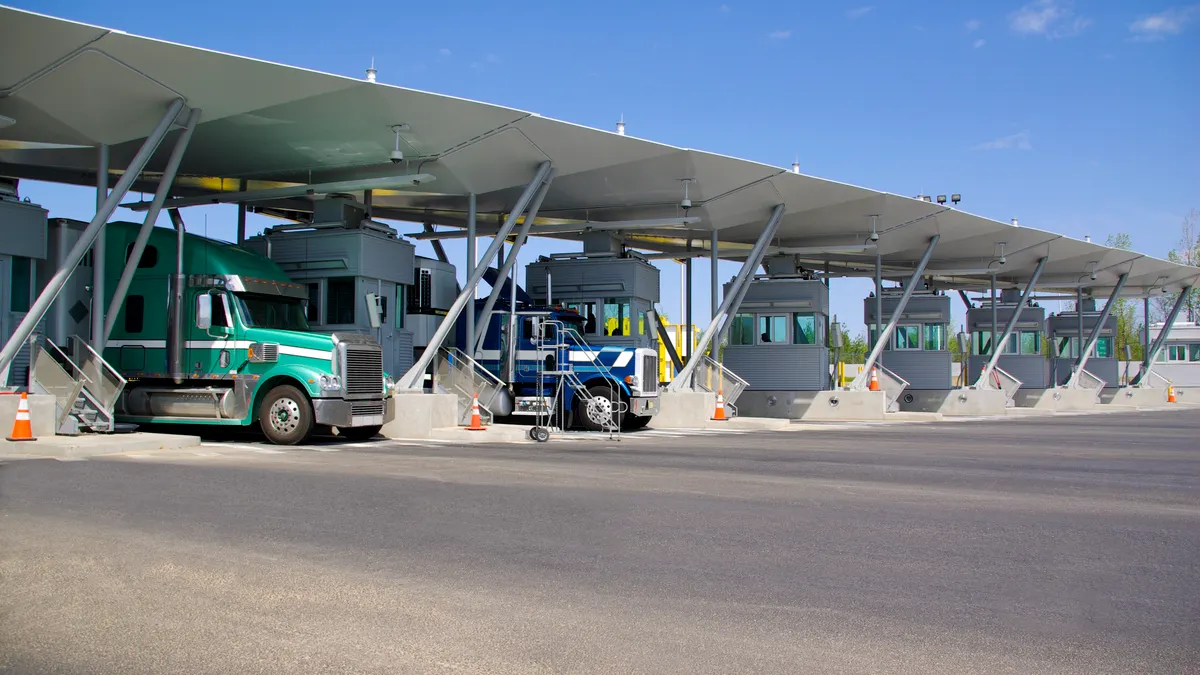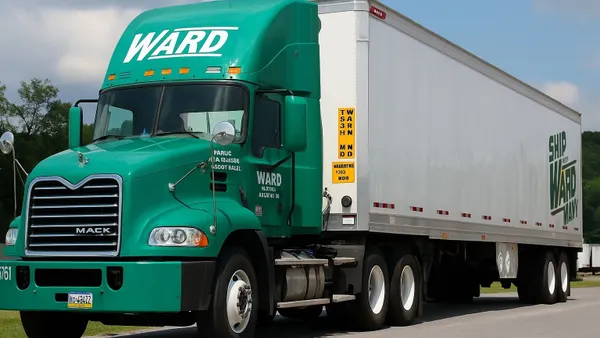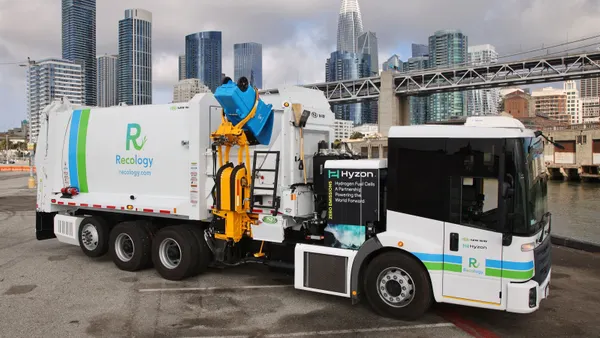Dive Brief:
- Old Dominion Freight Line’s LTL tonnage per day dropped nearly 12% YoY in Q1, and executives acknowledged on an earnings call Wednesday that the freight bounceback the carrier expected in Q2 is unlikely to materialize in the near term.
- Despite some customers trading down to lower-priced competitors, the LTL carrier has maintained pricing and relatively consistent market share, outgoing CEO Greg Gantt said. He credited the company’s service value and long-term strategy.
- COO Marty Freeman, who will take over in July following Gantt’s retirement, said the volume decline could largely be attributed to customers sending fewer shipments in a tough economy. “Although there have been others that are beginning to emphasize price versus service and choosing lower-priced carriers,” he said.
Dive Insight:
Old Dominion started the year cautiously optimistic about the chance of a freight pickup late in Q1, accelerating further in Q2. That forecast has grown bleaker over the past month, which has seen a roughly 15% drop in monthly LTL tonnage with a few days to go.
“While our volumes stabilized during January and February as expected, we have not seen the acceleration in volumes that was originally anticipated,” Gantt said on the call.
The carrier’s longtime strategy is to maintain its premium pricing in slower periods, which enables it to make investments necessary to outperform competitors once freight demand rebounds. The company’s $4.5 billion in capital expenditures in the past decade have allowed it to grow both its service center network and workforce.
“This is consistent with 2009, when we had an economic recession and they did not chase shipments like FedEx and Conway at that time,” said LTL expert and industry observer Satish Jindel. “And that’s why Old Dominion is the darling of the industry. Others need to follow that leadership.”
Some customers in the retail and industrial sectors are increasing their shipments as others reduce them, CFO Adam Satterfield said on the call. Those shipping less with the carrier, including 3PL accounts, usually cite budget reductions.
“We've heard customers coming to us and saying, ‘Look, I need to do this to meet my own call center objectives,’” Satterfield said. “There's an internal mandate to save X dollars that they've got to try to meet in some way.”
“But generally speaking, that freight comes back to us,” he added. “If we ever lose freight, it's on price, but we generally always gain it back for service quality and capacity down the road.”
Jindel and Gantt highlighted another key performance indicator: Old Dominion’s improving yield. Revenue per hundredweight was up 9.2% YoY including fuel and 8.6% excluding fuel, according to Gantt.
Chasing volume alone — and neglecting to focus on the value of the freight and the service — can turn into a death spiral for pricing, particularly in a soft economy, Jindel said.
“It requires you to steal business from another carrier,” he said. “No carrier should be trying to steal business from another carrier. When you steal from someone else, you are no better off, because someone else will steal from you.”













